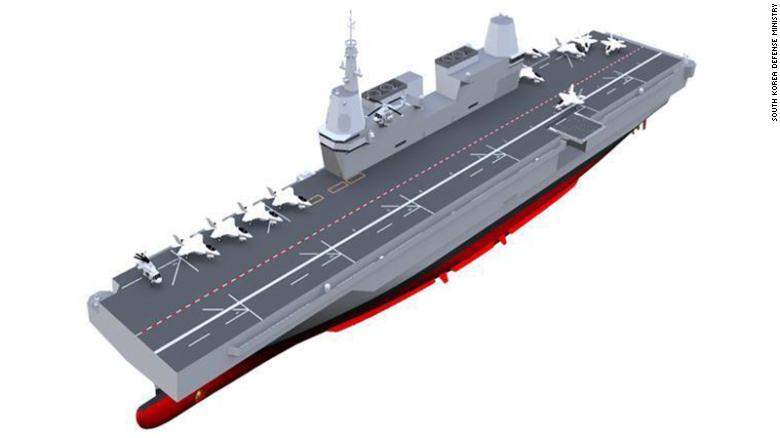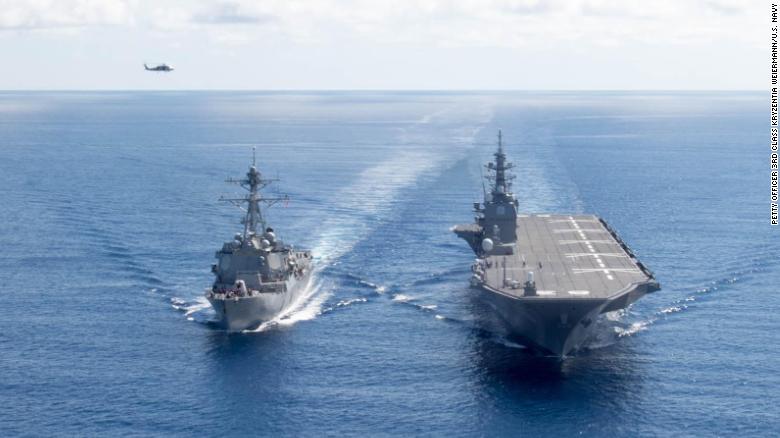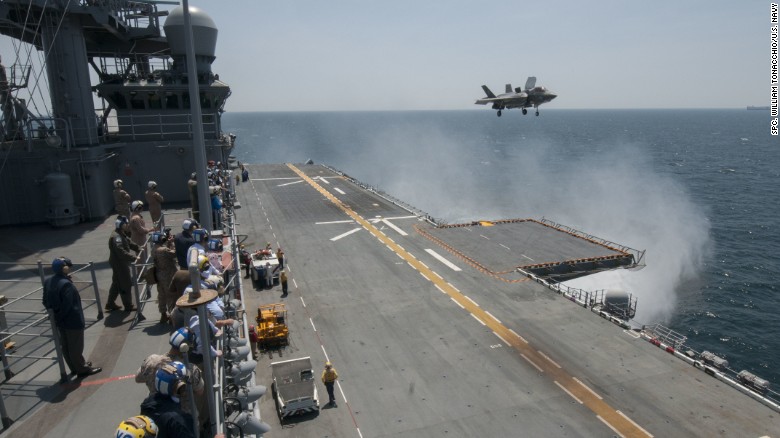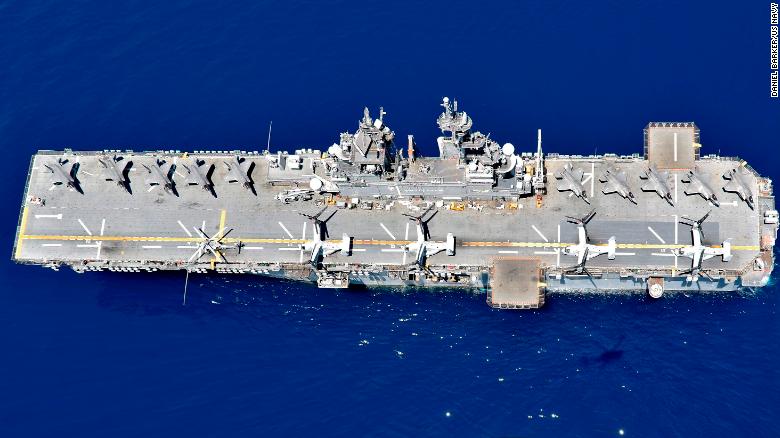HOME > Media Center > News
News
| Title | [CNN : South Korea is building its first aircraft carrier ] | ||
|---|---|---|---|
| Date | 2020-08-14 | Hit | 8331 |
|
Seoul, South Korea (CNN)South Korea plans to start building its first aircraft carrier next year, and acquire fighter jets to operate on it, the country's Defense Ministry has announced.
Last year, South Korea hinted at its interest in an aircraft carrier, saying it would build a "multi-purpose large transport vessel." But in its national plan for 2021-2025, published this week, the government for the first time explicitly committed to building the billion-dollar equipment.
"The 30,000-ton level aircraft carrier can transport military forces, equipment and materials and can operate fighter jets that are capable of vertical take-off and landing," said the Defense Ministry release.
"It will enable the military to more effectively suppress threats and dispatch forces and materials to a disputed region in the sea by playing a role of a controlling vessel for the navy unit."
It is expected South Korea will purchase US-made F-35B fighter jets, which have short takeoff and vertical landing capability, compatible with a small aircraft carrier. F-35Bs are the only short take-off and vertical landing fighter jets in production in the world.
The country will join Japan and the United States in deploying F-35Bs on light aircraft carriers in the western Pacific.
All three nations have contentious relationships with North Korea, which resumed missile testing after the country's leader, Kim Jong Un, and US President Donald Trump failed to reach a nuclear deal.
In December 2018, Japan announced it was refitting its Izumo-class helicopter destroyers to carry the F-35Bs a landmark move as the country hasn't put aircraft carriers to sea since World War II. Conversion of the JS Izumo was among the projects Japan listed in its most recent defense white paper as scheduled to begin in fiscal year 2020.
The US also bases an amphibious assault ship, as the US Navy calls its small carriers, with F-35Bs in Japan.
With its 30,000-ton displacement, the size of the South Korean ship will be closer to that of its Japanese counterpart rather than to the 43,000-ton USS America, which is deployed to Japan.
China has also been constructing large, amphibious assault ships. However, Beijing doesn't yet have fighter jets with the short takeoff and vertical landing capability to use on them.
A costly arsenalSouth Korea didn't give a cost estimate for the light aircraft carrier, but US government reports price a new version of the USS America which is 25% to 30% bigger than the South Korean ship at almost $4 billion. F-35B fighter jets cost about $122 million each.
Chun In-bum, a retired three-star South Korean Army general, questioned if Seoul is making a wise investment.
"Cost and benefit analysis really needs to occur. Is it worth it to invest this kind of money?" Chun said. "Another aspect to this cost is, if we invest in this capability, are we not going to divert from other prioritized capability?"
He said areas like logistics, training and even better radios for the South Korean military should take priority.
In acquiring the F-35Bs, South Korea joins the US, Japan and the UK as the only countries with the versatile stealth fighters, which manufacturer Lockheed-Martin says "redefines the multi-role fighter."
F-35Bs are fifth-generation stealth jets, capable of flying at Mach 1.6 more than one-and-a-half times the speed of sound and landing vertically.
The planes can carry two air-to-air missiles and two 1,000-pound guided bombs in their internal weapons bays.
The planes come with software suites which, in theory, allow them to communicate in real time in battle not only among South Korean forces, but also with other nations operating F-35s, such as the US, Japan and Australia, which has the F-35A model.
Lockheed-Martin says their short takeoff and vertical landing capability allows them to operate from roads or small airports as well as ships meaning they can be closer to the battlefront and have a quicker turnaround time on missions than conventional fighter aircraft.
"The primary advantage a small carrier offers South Korea is its use as a mobile airfield," said Carl Schuster, a former US Navy captain and a former director of operations at the US Pacific Command's Joint Intelligence Center.
"If North Korea targets South Korea's air bases ashore, being able to maneuver and attack from ever-changing locations has tactical and operational advantages."
The carrier can also expand the reach of the South Korean military, Schuster said possibly as far as the Indian Ocean.
"It signals the ROK Navy intends to operate farther from home than it does now," he added.
Besides any possible combat roles, the South Korean military said the new carrier "will also work as a multi-purpose military base in the sea in a non-military threat situation such as a rescue operation for citizens when disasters or accidents occur."
|
|||
| Prev | MADEX 2021 e-Newsletter vol.1 |
|---|---|
| Next | [MADEX 2019 ] OFFICIAL SHOW DAILY |



























 Kyungyon Exhibition Corp.
Kyungyon Exhibition Corp.